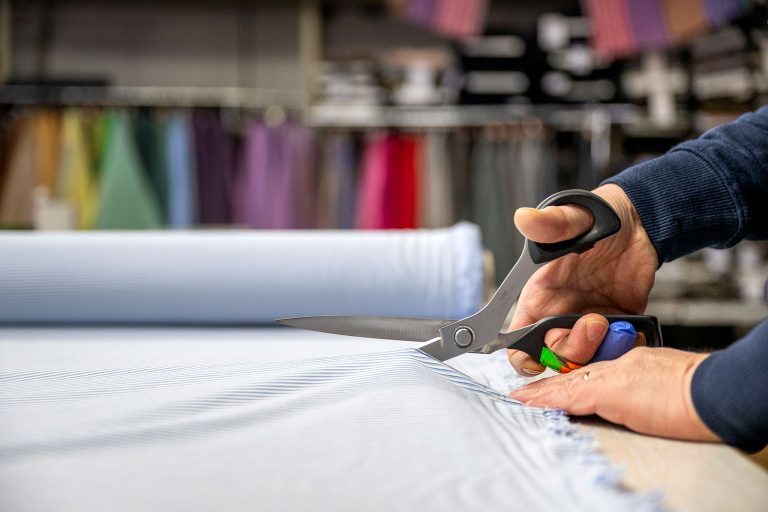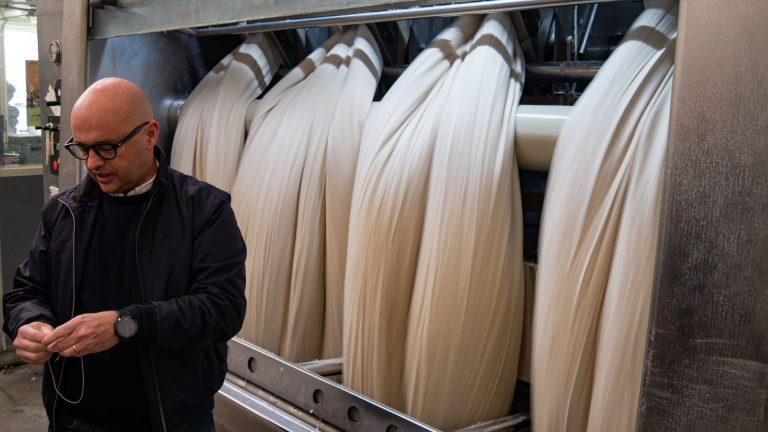Cotton is one of the most widely used fibres in the fashion industry, but not only: whether it is fabric, yarn or cellulose, its applications are countless.
Its use has very ancient origins: the first evidence dates back 5000 years in Pakistan and Mexico. Today, there are many places where it is cultivated: America, China, Pakistan.
Natural and versatile, cotton is obtained from certain plants of the genus Gossypium. These are able to produce a few yellow flowers from which come fruits that contain seeds covered by the cotton wool that, once harvested and processed, gives life to the famous yarn.
The cotton wool, once extracted, is ‘ginned’ to be cleaned of all seeds before ‘carding’, with which the filaments are untangled for the last stage, that of ‘combing’, which serves to remove any impurities along with the shorter fibres.
Tell me what fabric it is and I will tell you how long it will last.
Not all cotton used by the textile industry has the same quality characteristics and this depends mainly on two factors:
- Cultivation: the ever-increasing need for cotton has ‘pushed’ farmers to use pesticides, fertilisers and GMOs to ensure plentiful harvests, so it is important, even if more expensive, to go for organic cotton or cotton that is organic;
- Finishing: a natural treatment is always preferable to chemical finishing techniques used to make the yarn brighter or whiter.
But let’s get to the practical part: how to recognise quality? There are more professional and certainly more reliable ways.
The cotton “terroir”.
The label ‘100% cotton’ generates the WOW effect in everyone, but beware, because this wording does not provide any insight into the quality of the raw material.
The fineness of a fabric depends on several factors, such as the variety of plants from which it is obtained, the area in which it is cultivated and, of course, how the raw material is processed. Two garments, both made of cotton, can therefore be extremely different from each other. The differences are perceptible to the touch because of the softness, to the eye because pure cotton is never optically white and the threads are uniform.


Long fibre vs. short fibre.
What most determines a high-quality cotton is the length of the fibre. The longer the threads, the more they will twist around each other for greater extension. As a result, a long-fibre cotton fabric is smoother and brighter, pleasantly soft and cool to the touch, less prone to wrinkling, resistant to rubbing and long-lasting.
For the exact opposite reason, the shorter the cotton fibre, the more the free ends of the individual filaments will protrude from the thread to which they are twisted. Fabrics made from short-fibre cotton will therefore be less pleasant to the touch, will be covered with dots where the fabric is subject to rubbing, and will tend to become thinner over time.
Yarn fineness.
The fineness of a cotton fibre is measured in microns. This is an important value as a very fine fibre allows the creation of threads that are themselves fine, which once worked on the loom will result in very dense fabrics.
A square centimetre of fabric made from a thin thread will have many more weaves than the same area made from a thicker thread. The result is a more compact, uniform and smooth fabric that is less prone to wear.
GOTS Certifications.
The Global Organic Textile Standard is recognised as the most important international standard for the sustainable production of garments and textile products made from natural organic fibres, such as cotton.
It is promoted by leading international organic farming organisations to ensure responsible and sustainable development in the textile sector. In particular, the GOTS verifies and certifies the content of natural fibres from organic farming in both intermediate and finished products, the maintenance of traceability throughout the entire production process, restrictions on the use of chemicals, and compliance with environmental and social criteria at all stages of the production chain.
In the end, checking the quality of a cotton product is an act of ‘generosity’ and thoughtfulness towards the environment, the ‘insiders’ working along the supply chain, and the final user who will have full knowledge of his garment.




